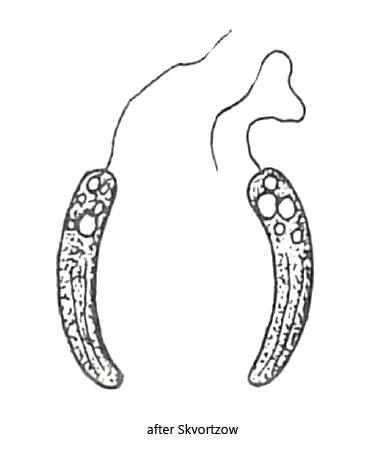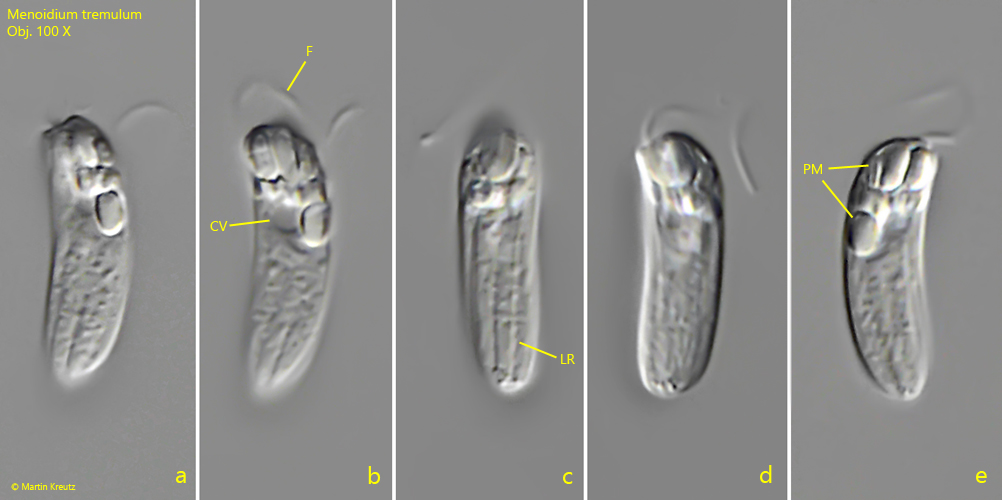Menoidium tremulum (Skvortzow, 1924)
Most likely ID: n.a.
Synonym: n.a.
Sampling location: Purren pond
Phylogenetic tree: Menoidium tremulum
Diagnosis:
- cell elongately cylindrical, slightly curved
- anterior and posterior end broadly rounded
- length 18–25 µm
- periplast with longitudinal ridges
- one flagellum of body length

The original description by Skvortzow (1924) is very short and he placed this flagellate in Menoidium. Authors after him like Huber-Pestalozzi (1955) and Angeler et al. (2002) doubt if the short description is sufficient to describe a species. Furthermore, Huber-Pestalozzi is of the opinion that Menoidium tremulum actually belongs to the genus Rhabdomonas, because the body is not flattened, but is rotund. Skvortzow himself indicates the cells to be cylindrical. Since the species has neither been redescribed nor placed in Rhabdomonas so far, I keep the originally assigned name.
I found Menoidium tremulum in the mud of the Purren pond. At first sight it looks similar to Rhabdomonas costata, but it is much smaller. In addition, the large paramylon grains present are all located in the anterior quarter of the cell (as drawn by Svortzow, s. above). The longitudinal furrows of the pellicle only very weakly run in a clockwise spiral to the posterior end. My specimen is still slightly smaller than Skvortzow indicates, but still within usual variations.

Fig. 1 a-e: Menoidium tremulum. L = 16 µm. A freely swimming specimen. Note the longitudinal ridges of the pellicle (LR) and the contractile vacuole (CV) in the anterior third of the cell. F = flagellum, PM = paramylon grains. Obj. 100 X.